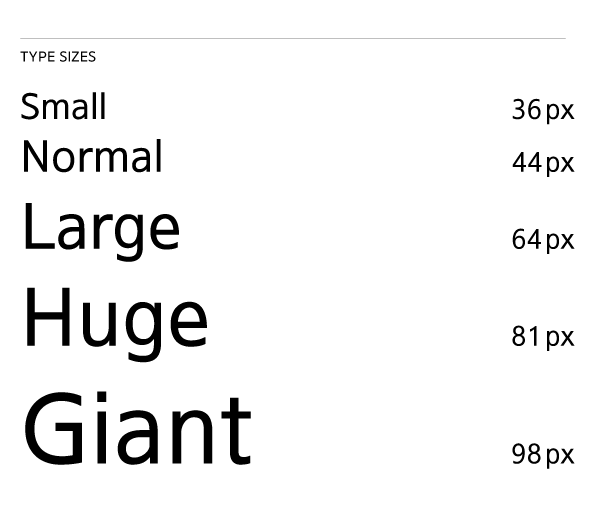Are you looking to improve your typography skills? In this article, we’ll explore the five basic rules that will help you elevate your designs. From proper spacing and font selection to understanding typeface styles and alignment, these rules will ensure your typography stands out. By following these guidelines, you’ll create visually appealing and effective designs that capture attention. Get ready to take your typography game to the next level!
Importance of Typography in Design
Typography plays a crucial role in your design, as it sets the tone, conveys information, and engages the reader. The importance of typography in branding cannot be overstated. It helps to establish the personality and identity of a brand. Whether it’s a bold and modern typeface for a tech company or a classic and elegant font for a luxury brand, typography is a powerful tool for communicating the values and essence of a brand.
But typography goes beyond branding. It also plays a significant role in user experience. The way text is presented on a website or app can greatly affect how users interact with it. The choice of font, font size, spacing, and alignment can enhance readability and make the content more accessible and enjoyable to read. On the other hand, poorly chosen typography can lead to a frustrating user experience, causing users to abandon a website or app.
Rule 1: Proper Spacing and Kerning
Proper spacing and kerning are essential elements in typography that greatly impact the readability and visual appeal of your design. Letter spacing refers to the amount of space between individual characters, ensuring that they are evenly distributed and easy to read. On the other hand, kerning focuses on adjusting the space between specific pairs of letters to create a harmonious and balanced look. By paying attention to these details, you can enhance the overall aesthetics and legibility of your typography.
Importance of Letter Spacing
To achieve legible and visually appealing typography, one of the essential rules is ensuring appropriate spacing and kerning between letters. Letter spacing, also known as tracking, refers to the adjustment of space between each character in a word. Effective letter spacing plays a crucial role in enhancing readability and overall design aesthetics. When it comes to letter spacing techniques, it is important to strike a balance between tight and loose spacing. Tight spacing can lead to overcrowded text and make it difficult to read, while loose spacing can create gaps and disrupt the flow. To achieve optimal letter spacing, consider the typeface, font size, and overall layout. Additionally, kerning, the adjustment of space between specific pairs of letters, can further refine the spacing and improve the overall appearance of the text.
Impact of Kerning
Achieving proper spacing and kerning in typography has a significant impact on the overall legibility and visual appeal of the text. Kerning refers to adjusting the space between individual letter pairs, ensuring they are visually balanced and harmonious. By implementing effective kerning techniques, you can enhance readability and make your text more pleasing to the eye. One of the kerning best practices is to focus on problematic letter combinations, such as ‘AV’ or ‘TO,’ where the letters may appear too close or too far apart. Properly adjusting the kerning in these pairs can eliminate any visual inconsistencies and improve the overall flow of the text. Paying attention to kerning is crucial for creating professional and visually appealing typography.
Rule 2: Choosing the Right Fonts
When it comes to choosing the right fonts, there are a few key points to consider. First, prioritize readability – opt for fonts that are clear and easy to read, especially in smaller sizes. Second, master font pairing techniques to create visual harmony and balance. Lastly, recognize the impact that font choice can have on the overall tone and message of your design – different fonts evoke different emotions and convey different meanings.
Font Readability Tips
Choose fonts that are easy to read to ensure optimal readability in your typography. Font legibility is crucial when it comes to conveying your message effectively. Here are some tips to enhance font readability:
- Consider the font’s design: Opt for fonts with clean lines and clear shapes, as they are generally easier to read.
- Pay attention to font size guidelines: Use a font size that is large enough for easy reading, but not too big to create clutter.
- Use appropriate font weights: Avoid using extremely thin or bold fonts, as they can strain the eyes.
- Maintain sufficient spacing: Ensure that there is enough space between letters, words, and lines to improve legibility.
- Test your font choices: Always preview your typography to see how it appears on different screens and devices.
Font Pairing Techniques
To ensure effective typography, it is essential to understand proper font pairing techniques. Font combinations play a crucial role in creating visually appealing designs and enhancing readability. When choosing fonts, consider the overall aesthetic and purpose of your project. Aim for contrast and balance by pairing a serif font with a sans-serif font or a script font with a bold, geometric font. Experiment with different styles, weights, and sizes to find the perfect combination. Avoid using fonts that are too similar, as they can create confusion and make the text appear bland. Remember to keep the focus on the content and message by selecting fonts that complement each other and enhance the overall design.
Impact of Font Choice
Make sure you have the right fonts by considering the impact they will have on your typography. The font choice plays a crucial role in the overall look and feel of your design. It affects the readability and legibility of your content, as well as the emotional response it evokes from your audience. Here are some key points to consider when choosing fonts:
- Font Psychology: Different fonts have different psychological effects on readers. Serif fonts, for example, are often associated with tradition and formality, while sans-serif fonts give a more modern and clean impression.
- Legibility Factors: Consider the legibility factors of the font, such as the x-height, letter spacing, and line spacing. Fonts with good legibility ensure that your message is easily readable and understood.
- Contrast: Pair fonts with contrasting characteristics to create visual interest and hierarchy in your typography.
- Consistency: Maintain consistency in your font choices throughout your design to create a cohesive and professional look.
- Brand Identity: Choose fonts that align with your brand’s personality and values to reinforce your brand identity.
Rule 3: Understanding Typeface Styles
When understanding typeface styles, it is important to recognize the impact they have on the overall design and readability of your text. Typeface classification plays a crucial role in determining the look and feel of your content. Two main categories of typefaces are serif and sans serif.
Serif typefaces are characterized by the small lines or strokes that extend from the ends of the letters. These little details, known as serifs, create a classic and elegant feel. Serif fonts are often used for print materials, such as books or newspapers, as they enhance legibility and guide the reader’s eye along the text.
On the other hand, sans serif typefaces lack these additional strokes, resulting in a clean and modern appearance. Sans serif fonts are commonly used for digital content, such as websites or social media posts, as they offer better readability on screens.
Understanding the differences between serif and sans serif typefaces allows you to make informed decisions when choosing the right font for your project. Consider the context and purpose of your text, as well as the desired tone and atmosphere. By selecting the appropriate typeface style, you can enhance the visual appeal and readability of your content.
Rule 4: Alignment and Hierarchy
To effectively utilize typography, you must understand the importance of alignment and hierarchy. Alignment techniques play a crucial role in creating a cohesive and visually pleasing design, ensuring that all elements are properly positioned. Here are five alignment techniques that can enhance your typography:
- Left alignment: This is the most common alignment technique, where the text is aligned along the left margin. It provides a clean and organized look, making it easy for readers to follow the text.
- Center alignment: Centering the text can create a sense of balance and symmetry. It is commonly used for headlines or short blocks of text.
- Right alignment: Right-aligned text can be used to create a sense of asymmetry or to draw attention to certain elements. It is often used in designs that require a more dynamic or unconventional layout.
- Justified alignment: Justified alignment evenly spaces the text between the left and right margins. It gives a polished and professional look to the typography.
- Flush alignment: Also known as “ragged right” or “ragged left,” flush alignment creates uneven edges on one side of the text. It can add a sense of informality and creativity to the design.
Hierarchy in typography is essential for guiding readers through the content and highlighting important information. It involves creating distinctions between different levels of text, such as headings, subheadings, and body text, through variations in font size, weight, and style. By establishing a clear visual hierarchy, you can improve readability and emphasize the most critical elements of your text.
Rule 5: Consistency and Contrast
Consistency and contrast play an important role in creating visually appealing typography designs, ensuring that your text is both cohesive and engaging. When it comes to contrast, it’s crucial to strike a balance between readability and visual interest. Contrast can be achieved by using different typefaces, font sizes, or font weights to distinguish various elements of your design. However, it’s important to keep in mind that readability should never be compromised in the pursuit of contrast.
Maintaining visual consistency is equally important in creating a cohesive and professional typography design. This means using consistent typography elements throughout your design, such as font families, font sizes, and line spacing. Consistency helps establish a sense of order and makes it easier for readers to navigate and understand the content.
To ensure both consistency and contrast, consider using a limited color palette and sticking to a consistent hierarchy of font styles. This will help guide the reader’s eye and emphasize important information. Additionally, pay attention to the spacing between letters, words, and lines to ensure optimum readability.
Conclusion: Elevating Your Typography Game
By focusing on consistency and contrast, you can elevate your typography game and create designs that are both visually appealing and easy to read. Typography techniques and design principles play a crucial role in achieving this goal. Here are five key takeaways to help you enhance your typography skills:
- Choose a legible and appropriate typeface: Selecting a font that is easy to read and aligns with the message and tone of your design is essential. Experiment with different fonts to find the perfect match.
- Pay attention to hierarchy: Establish a clear visual hierarchy by using variations in font size, weight, and style. This will guide the reader’s eye through the content and highlight important information.
- Utilize white space effectively: White space, or negative space, is a powerful tool in typography. It helps create balance, enhance readability, and draw attention to key elements of your design.
- Experiment with alignments and spacing: Playing with alignments, such as left, right, center, or justified, can add visual interest to your typography. Additionally, adjusting letter and line spacing can impact the overall readability and aesthetics of your design.
- Maintain consistency: Consistency is key in typography. Ensure that your font choices, sizes, and styles remain consistent throughout your design to create a cohesive and professional look.



